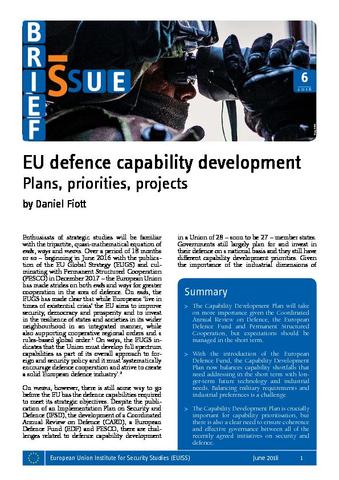You are here
EU defence capability development – Plans, priorities, projects

Enthusiasts of strategic studies will be familiar with the tripartite, quasi-mathematical equation of ends, ways and means. Over a period of 18 months or so – beginning in June 2016 with the publication of the EU Global Strategy (EUGS) and culminating with Permanent Structured Cooperation (PESCO) in December 2017 – the European Union has made strides on both ends and ways for greater cooperation in the area of defence. On ends, the EUGS has made clear that while Europeans ‘live in times of existential crisis’ the EU aims to improve security, democracy and prosperity and to invest in the resilience of states and societies in its wider neighbourhood in an integrated manner, while also supporting cooperative regional orders and a rules-based global order. On ways, the EUGS indicates that the Union must develop full spectrum capabilities as part of its overall approach to foreign and security policy and it must ‘systematically encourage defence cooperation and strive to create a solid European defence industry’.
On means, however, there is still some way to go before the EU has the defence capabilities required to meet its strategic objectives. Despite the publication of an Implementation Plan on Security and Defence (IPSD), the development of a Coordinated Annual Review on Defence (CARD), a European Defence Fund (EDF) and PESCO, there are challenges related to defence capability development in a Union of 28 – soon to be 27 – member states.